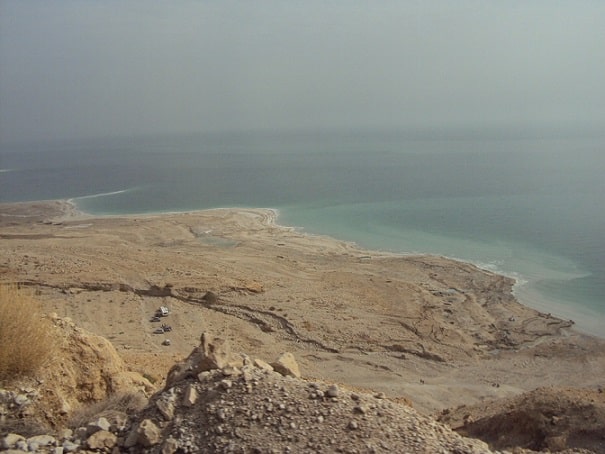Scientists have found evidence nearly 1,000 feet below the bed of the Dead Sea, between Israel, Jordan and Palestinian territories, that the Mideast suffered unprecedented droughts on scales never before recorded by humans.
In 2010, drillers brought to the surface a core, from depths of 300 metres below the landlocked basin, which contained alternating layers of mud washed in with runoff during wet times, and 30 metres of thick, crystalline salt, precipitated out during dry times when the water receded.
The new study shows that the salt accumulated rapidly − an estimated half-inch per year in many cases. The layers also show scientists that rainfall plummeted to as little as 20% of modern levels some 120,000 years ago, and again about 10,000 years ago, in a period between ice ages.
These two striking periods, during which variations in Earth’s orbit brought temperatures about 4 degrees hotter those of the 20th century; the equivalent to what is projected for the end of the 21st century.
Today the region where human civilisation began is again experiencing a devastating drought; the worst in 900 years, and scientists say that it could get far worse than previously suspected. The findings of this study, Relationships between lake-level changes and water and salt budgets in the Dead Sea during extreme aridities in the Eastern Mediterranean, were recently published in an early online edition of the journal Earth and Planetary Science Letters.
All the observations show this region is one of those most affected by modern climate change and it’s predicted to get dryer. What we showed is that even under natural conditions, it can become much drier than predicted by any of our models, said Yael Kiro, lead author and a geochemist at Columbia University’s Lamont-Doherty Earth Observatory in the US.
The landlocked Dead Sea is earth’s lowest spot on land, about 400 metres below sea level and traps water from the Jordan River which also extends in to Syria and Lebanon. YÄm ha-Melah, (Biblical Hebrew name which means the sea of salt) has become increasingly saline over millennia. Rainfall in the region has fallen by 10% since 1950, and predictions are that levels will continue to drop.
The U.N. Food and Agriculture Organisation estimates that the per capita water availability in much of the region is already only 10% of the world average, and scientists say that we should take what happened in the past as a warning for what could happen in the future.
Get water coolers and rent water coolers from Living-Water.






